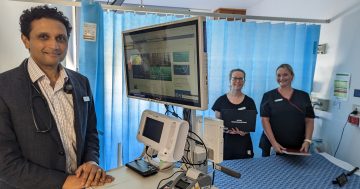STOP GOING!
I was listening to Ross Solly hammer the Director-General of Health this morning on the radio and some of the feedback from listeners is a clear indication of why the ED in The Canberra Hospital is under such stress. People who cannot be in need of emergency treatment are showing up in droves. The ABC is reporting that an average of 182 people per day are showing up just at the ED in the Canberra hospital.
GPs exist for a reason – to diagnose and treat illness and injury that does not require immediate emergency attention. They are also much much easier to access than people seem to think. I called the GP in O’connor last week, they had spots all that day. The GP in Lyneham is advertising for business. I know that recently Andrew Leigh did a list on his website of all the GPs on the Northside who were taking new bookings and who bulk-bill. When I went to the GP in O’connor they did the medicare rebate on the spot – so only $30 out of pocket for a full appointment where the Dr was in no rush to get me out the door. In the past I have been to the Phillip Medical Centre and always been seen within a couple of hours without an appointment.
I’ve also been to the Walk-in Centre a couple of times and never waited more than half an hour. The nurses there will tell you what is wrong with you and refer you on, if necessary, to a GP or to the ED – if it is something that are not able/allowed to treat.
Tl;DR the ED is for emergencies, if you are not in immediate need there are a lot of other options.




















